Authenticity.
The core in traveling to any desired destination rests squarely on that specific word. Authenticity conveys most accurately the pivotal aspect in determining a lasting legacy by embedding a connection that resonates long after the visit concludes.
Within the DNA at Pinehurst the word authentic is central to its daily core. That connection to the word is not simply a public relations talking point – but a meaningful connection manifesting itself in all aspects when there.
The famed facility — located in the Sandhills region of North Carolina — was created in 1895 by founder James Walker Tufts. The successful Massachusetts businessman wanted to create an ideal getaway for winter weary Northerners and those seeking a respite from the rigors of daily life.
Tufts purchased 5,000 acres at just over a $1 per acre. Many considered his actions folly given the sheer isolation of the area and the barren nature of the property after being stripped of its pines by the timber industry.
On June 20, 1895, Tufts contacted Frederick Law Olmsted, the designer of Central Park in New York and the landscape designer of the Biltmore Estate in Asheville, North Carolina, to help him create a first-rate resort. That summer, with the new plan in hand, 450 men began construction on what was originally referred to as “Tuftstown.” Tufts selected the name “Pinehurst” for his resort out of a list of non-winning names for Martha’s Vineyard.
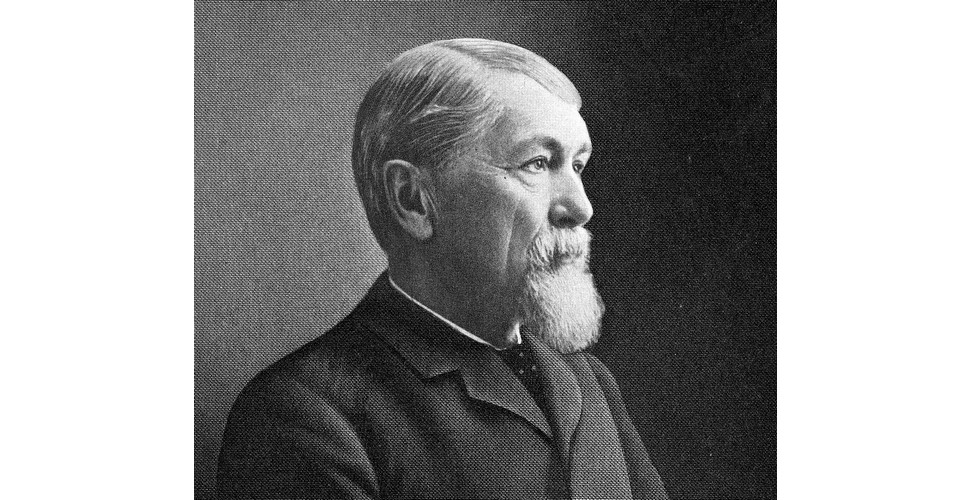
On New Year’s Eve 1895, the Holly Inn opened its doors. Since all of the early buildings of Pinehurst stood on barren land, Tufts hired Warren Manning to plant over 222,000 tree seedling and other plants — amazingly 47,250 of these were imported from France — and planted around Pinehurst to give the resort the natural beauty that exists today.
Olmsted’s efforts brought front and center a “Village” that eschews gaudiness and puffery while engendering a stylish simplicity. Where other facilities embraced garish loudness — Pinehurst’s calling card is in relishing a more subdued pace. Promoting a whispered tone with Mother Nature in the lead role. Hearing the church bells at various time via the Village Chapel fosters an authentic connection to this day. A lasting and enriching link celebrating its founder and his New England roots.
Golf was not on the original menu at Pinehurst – that came into being a few years afterwards. As with the hiring of Olmstead a second critical decision was then made — hiring Scotsman Donald Ross to elevate the developing sport of golf in the United States.
When Ross arrived, a fledging nine-hole course was operating but he was quick to leave his enduring fingerprints. Ross was keen to weave designs that worked in tandem with the sport’s roots from Scotland and in alignment with the rich character of the Sandhills region.
Integration of Community and Golf
Pinehurst is the best example in the USA where golf is linked together seamlessly with the community. The only other example globally where such a fascinating intersection takes place is at St. Andrews in Scotland — the home of golf.
Where a number of facilities segregate themselves away, Pinehurst embraces the total immersion of community and golf interwoven in all aspects. Hardly a clever marketing ploy but a joyous nexus with authenticity the stated goal and actual outcome.
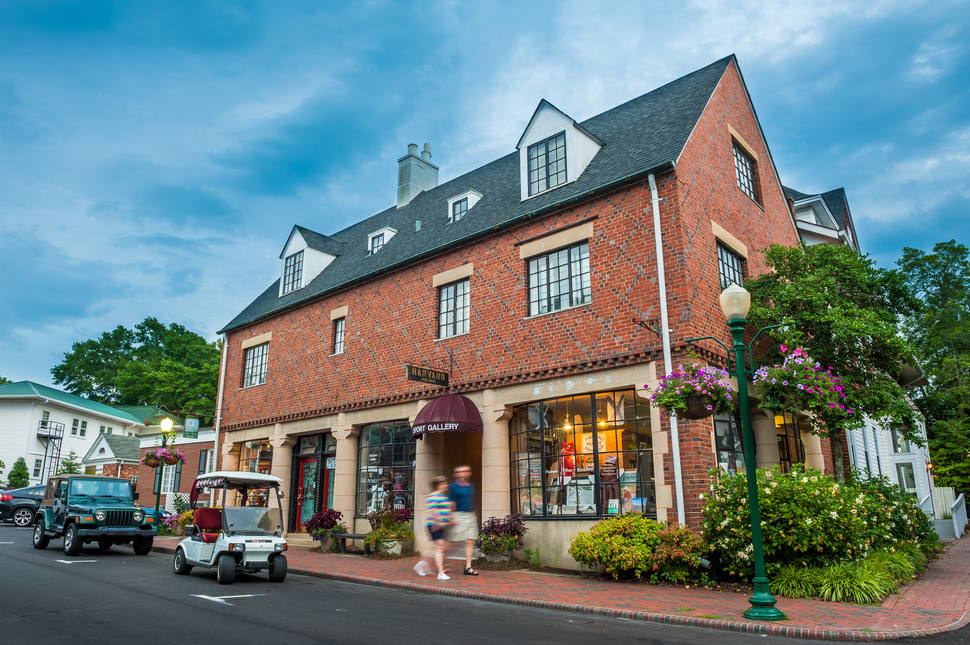
Ross was involved with several of the golf designs at Pinehurst with each noted by a specific number. The #2 course soon was recognized as one of the USA’s premier designs and was updated, as needed, throughout his life which ended in 1948.
Tufts’ grandson, Richard S. Tufts, was responsible for elevating the facility to an even higher level with a range of events — both on the professional and amateur side of the aisle Notably hosting the 1936 PGA Championship and the 1951 Ryder Cup matches.
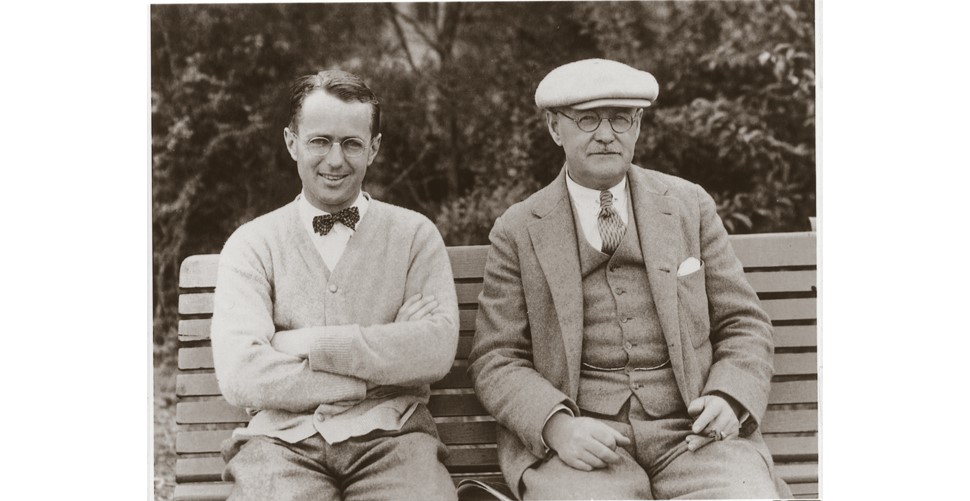
The #2 Course promoted shotmaking and smartly intersected aerial and ground options throughout the round. The secret sauce of #2 was not a slavish penal style but one that showcased mental prowess fostering the widest array of golf skills and knowing when and in what manner to use them throughout the round.
The Dark Years – Losing Identity
The link to authenticity came to an end when the Tufts family opted to sell Pinehurst to the Diamondhead Corporation in January, 1971 for the sum total of $9.2 million
The original Tufts concept was quickly jettisoned. Diamondhead saw things vastly differently. Opting to ramp up real estate sales — pushing housing upon the various golf courses as fast as could be built. Pinehurst began a slow descent — losing its cherished character in the process.
But the most egregious move came with the gutting of the core philosophy tied to the famed #2 course. Turning the Ross gem into a generic run-of-the-mill layout in which the fundamental connection between the air and ground games was eviscerated. The magic of #2 became just another golf facility with a nonexistent soul.
The Renaissance
The dark side came to an end when Diamondhead opted to sell the property in 1984 to Club Corp of America. The stewardship of Club Corp Chairman Robert H. Dedman, Sr., put the brakes on the slide. Beginning the slow but steady ascent back to an authenticity vaporized by Diamondhead.
Dedman seized the opportunity in rejuvenating the Pinehurst brand. One of the most impactful events came when the United States Golf Association (USGA) chose Pinehurst to host the U.S. Open in 1999. Amazingly, in all the years Pinehurst was owned by the Tufts family and given Richard was USGA President from 1956-57, the highest USGA Championship played there was the 1962 U.S. Amateur.
Six years later in 2005 a second U.S. Open was hosted at Pinehurst, but the move that propelled the property like a rocket on a launch pad came four years later in 2009 when the architectural tandem of Bill Coore and Ben Crenshaw were hired by Dedman to return the core elements of the famed #2 Course back to the philosophy of Ross. The #2 Course is now back among the upper echelon of courses in the United States.
The talented design duo reintroduced the famed wire grass along the edges of the fairways. Additionally, 700 sprinkler heads were removed – providing for an engaging look between the prepared and unprepared grounds.
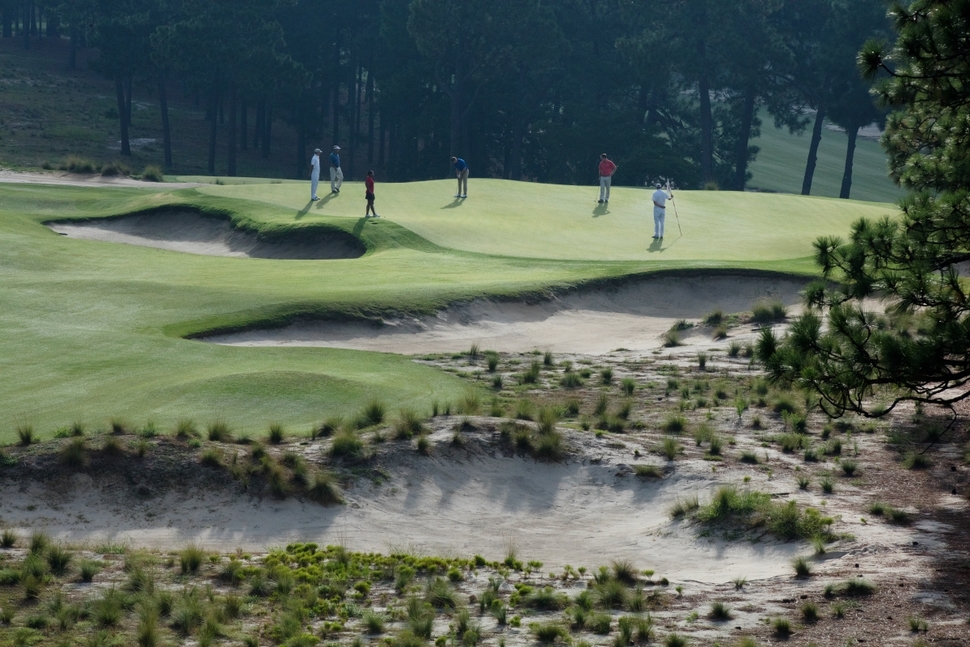
The firmness of the turf was promoted — providing an authentic connection for golfers to incorporate both an aerial and ground game during the round. Prior to the involvement of Coore and Crenshaw the #2 Course was using upwards of 40 to 50 million gallons of water per year. That number has since dropped to 12 million — demonstrating how sustainable and challenging golf can be when aligned together.
The momentum continued in 2017 when architect Gil Hanse was hired to provide a 9-hole layout aptly named, The Cradle – symbolizing Pinehurst’s ground zero role for golf’s development in the United States.
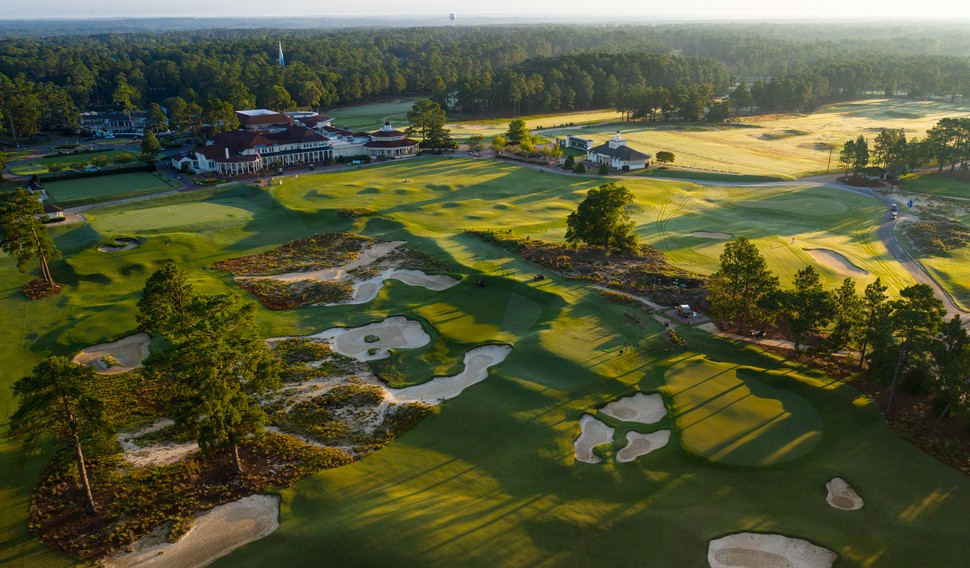
The short course was located in front of the massive Pinehurst clubhouse and the 789-yard par-27 course has proven a stellar addition. The course provides an ideal setting providing players of all types and ages a meaningful golf connection — albeit on a smaller scale and at a faster pace of play.
Hanse also provided a much-needed updating of Pinehurst #4 in 2018– a layout originally created by Ross and later updated by Robert Trent Jones, Sr. and Tom Fazio respectively. The intrinsic elements of #4 provide for a much closer alignment to the spirt of the Sandhills region.
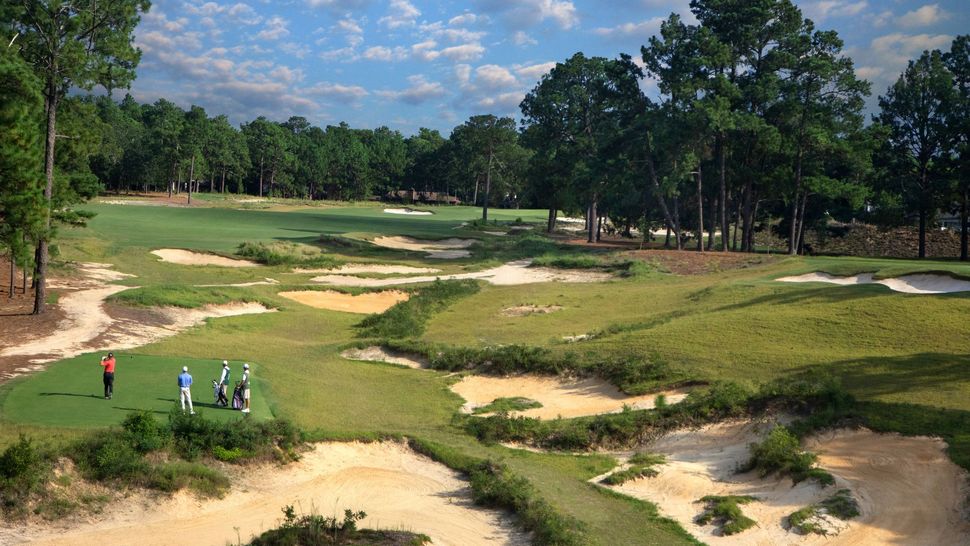
In tandem with The Cradle — Hanse updated the massive practice green. Named Thistle Dhu (this will do) the putting lawn stretches for 80 yards in front of the clubhouse covering almost 2 acres and evokes St. Andrew’s famed Himalayan putting green. How big? It takes 2½ hours to mow on a riding triplex mower.
Part 2
***
All photos and logo courtesy of Pinehurst Resort

